Elucidation of the interactome of the sucrose transporter StSUT4: sucrose transport is connected to ethylene and calcium signalling
- PMID: 36124639
- PMCID: PMC9730799
- DOI: 10.1093/jxb/erac378
Elucidation of the interactome of the sucrose transporter StSUT4: sucrose transport is connected to ethylene and calcium signalling
Abstract
Sucrose transporters of the SUT4 clade show dual targeting to both the plasma membrane as well as to the vacuole. Previous investigations revealed a role for the potato sucrose transporter StSUT4 in flowering, tuberization, shade avoidance response, and ethylene production. Down-regulation of StSUT4 expression leads to early flowering, tuberization under long days, far-red light insensitivity, and reduced diurnal ethylene production. Sucrose export from leaves was increased and a phase-shift of soluble sugar accumulation in source leaves was observed, arguing for StSUT4 to be involved in the entrainment of the circadian clock. Here, we show that StSUT4, whose transcripts are highly unstable and tightly controlled at the post-transcriptional level, connects components of the ethylene and calcium signalling pathway. Elucidation of the StSUT4 interactome using the split ubiquitin system helped to prove direct physical interaction between the sucrose transporter and the ethylene receptor ETR2, as well as with the calcium binding potato calmodulin-1 (PCM1) protein, and a calcium-load activated calcium channel. The impact of calcium ions on transport activity and dual targeting of the transporter was investigated in detail. For this purpose, a reliable esculin-based transport assay was established for SUT4-like transporters. Site-directed mutagenesis helped to identify a diacidic motif within the seventh transmembrane spanning domain that is essential for sucrose transport activity and targeting, but not required for calcium-dependent inhibition. A link between sucrose, calcium and ethylene signalling has been previously postulated with respect to pollen tube growth, shade avoidance response, or entrainment of the circadian clock. Here, we provide experimental evidence for the direct interconnection of these signalling pathways at the molecular level by direct physical interaction of the main players.
Keywords: Calcium binding; calcium channel; calcium inhibition; dual targeting; ethylene perception; protein-protein interaction; sub-cellular dynamics; sucrose transport.
© The Author(s) 2022. Published by Oxford University Press on behalf of the Society for Experimental Biology.
Figures


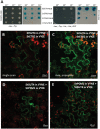


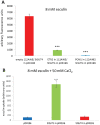
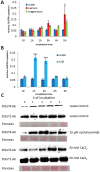

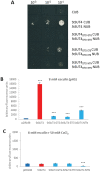
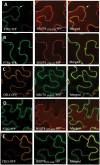
Similar articles
-
Photoperiodic regulation of the sucrose transporter StSUT4 affects the expression of circadian-regulated genes and ethylene production.Front Plant Sci. 2013 Feb 20;4:26. doi: 10.3389/fpls.2013.00026. eCollection 2013. Front Plant Sci. 2013. PMID: 23429841 Free PMC article.
-
Sucrose transporter StSUT4 from potato affects flowering, tuberization, and shade avoidance response.Plant Physiol. 2008 Feb;146(2):515-28. doi: 10.1104/pp.107.112334. Epub 2007 Dec 14. Plant Physiol. 2008. PMID: 18083796 Free PMC article.
-
Expression Level of Mature miR172 in Wild Type and StSUT4-Silenced Plants of Solanum tuberosum Is Sucrose-Dependent.Int J Mol Sci. 2021 Feb 1;22(3):1455. doi: 10.3390/ijms22031455. Int J Mol Sci. 2021. PMID: 33535646 Free PMC article.
-
Key players associated with tuberization in potato: potential candidates for genetic engineering.Crit Rev Biotechnol. 2017 Nov;37(7):942-957. doi: 10.1080/07388551.2016.1274876. Epub 2017 Jan 18. Crit Rev Biotechnol. 2017. PMID: 28095718 Review.
-
Sucrose transporter regulation at the transcriptional, post-transcriptional and post-translational level.J Plant Physiol. 2011 Aug 15;168(12):1426-33. doi: 10.1016/j.jplph.2011.02.005. Epub 2011 Mar 27. J Plant Physiol. 2011. PMID: 21444123 Review.
Cited by
-
Tomato sucrose transporter SlSUT4 participates in flowering regulation by modulating gibberellin biosynthesis.Plant Physiol. 2023 May 31;192(2):1080-1098. doi: 10.1093/plphys/kiad162. Plant Physiol. 2023. PMID: 36943245 Free PMC article.
-
How vacuolar sugar transporters evolve and control cellular sugar homeostasis, organ development and crop yield.Nat Plants. 2025 Jun;11(6):1102-1115. doi: 10.1038/s41477-025-02009-6. Epub 2025 May 21. Nat Plants. 2025. PMID: 40399548 Review.
-
Deep mutational scanning reveals sequence to function constraints for SWEET family transporters.bioRxiv [Preprint]. 2024 Jul 2:2024.06.28.601307. doi: 10.1101/2024.06.28.601307. bioRxiv. 2024. PMID: 39005363 Free PMC article. Preprint.
-
Genome-wide analysis and characterization of Dendrocalamus farinosus SUT gene family reveal DfSUT4 involvement in sucrose transportation in plants.Front Plant Sci. 2023 Jan 20;13:1118398. doi: 10.3389/fpls.2022.1118398. eCollection 2022. Front Plant Sci. 2023. PMID: 36743582 Free PMC article.
-
Harnessing the predicted maize pan-interactome for putative gene function prediction and prioritization of candidate genes for important traits.G3 (Bethesda). 2024 May 7;14(5):jkae059. doi: 10.1093/g3journal/jkae059. G3 (Bethesda). 2024. PMID: 38492232 Free PMC article.
References
-
- Althiab-Almasaud R, Chen Y, Maza E, Djari A, Frasse P, Mollet JC, Mazars C, Jamet E, Chervin C.. 2021. Ethylene signaling modulates tomato pollen tube growth through modifications of cell wall remodeling and calcium gradient. Plant Journal 107, 893–908. - PubMed
-
- Ballaré, CL, and Pierik, R.. 2017. The shade-avoidance syndrome: multiple signals and ecological consequences. Plant Cell and Environment 40,2530–2543. - PubMed
-
- Bitterlich M, Krügel U, Boldt-Burisch K, Franken P, Kühn C.. 2014. The sucrose transporter SlSUT2 from tomato interacts with brassinosteroid functioning and affects arbuscular mycorrhiza formation. The Plant Journal 78, 877–889. - PubMed
MeSH terms
Substances
LinkOut - more resources
Full Text Sources
Research Materials

